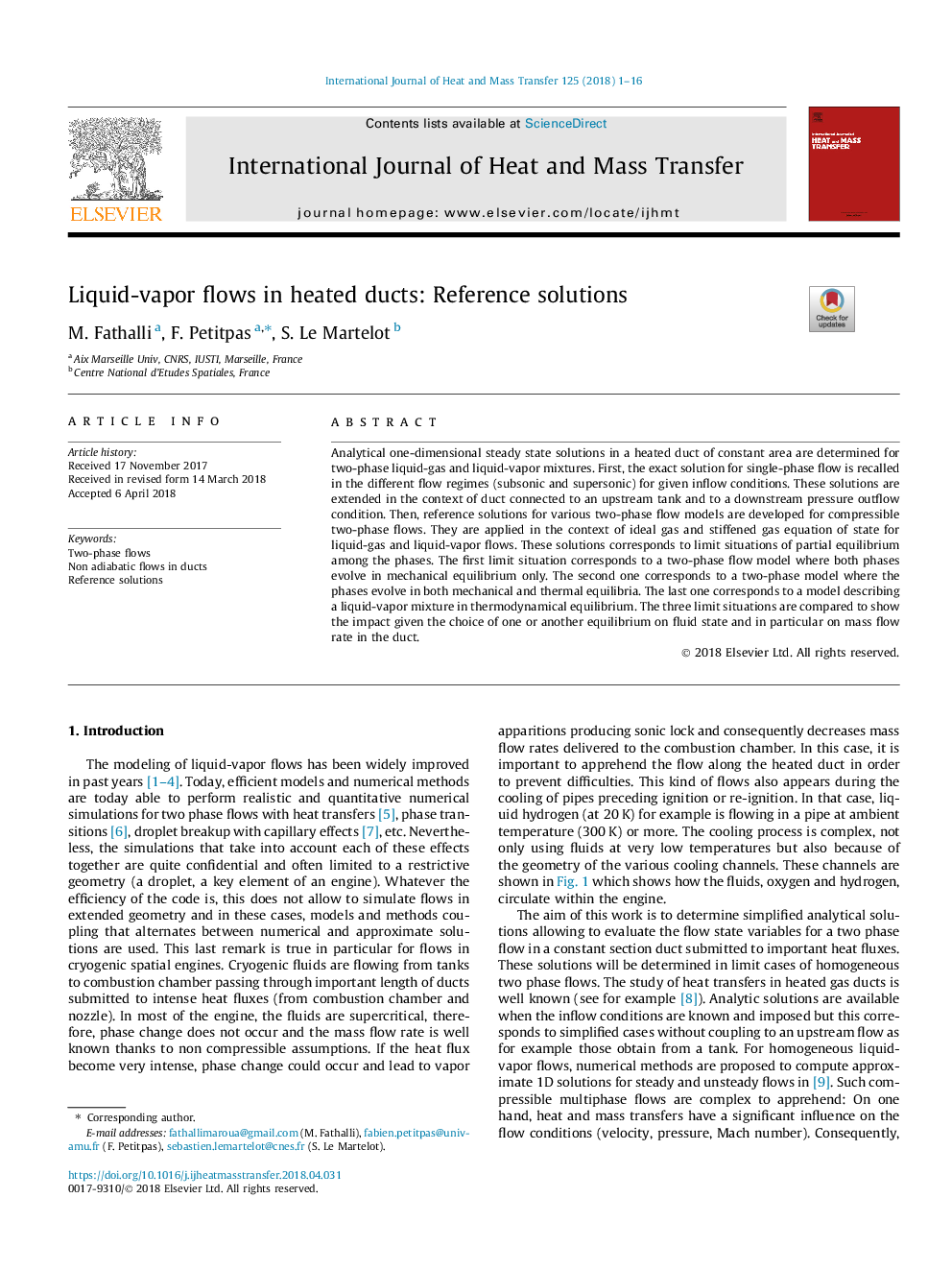| کد مقاله | کد نشریه | سال انتشار | مقاله انگلیسی | نسخه تمام متن |
|---|---|---|---|---|
| 7053997 | 1458015 | 2018 | 16 صفحه PDF | دانلود رایگان |
عنوان انگلیسی مقاله ISI
Liquid-vapor flows in heated ducts: Reference solutions
ترجمه فارسی عنوان
جریان بخار مایع در کانال های گرم: راه حل های مرجع
دانلود مقاله + سفارش ترجمه
دانلود مقاله ISI انگلیسی
رایگان برای ایرانیان
کلمات کلیدی
جریان دو فاز، جریانهای غیر آدیاباتیک در کانالها، راه حل های مرجع
ترجمه چکیده
راه حل های حالت ثابت یک بعدی تحلیلی در یک کانال گرم در منطقه ثابت برای دو فاز مایع گاز و مخلوط مایعات بخار تعیین می شود. اولا، راه حل دقیق برای جریان تک فاز در رژیم های مختلف جریان (زیرسیونی و باکیفیت) برای شرایط ورودی در نظر گرفته شده است. این راه حلها در بستر مجرای متصل به مخزن بالادست و شرایط خروج از فشار جریان پایین گسترش یافته است. سپس، راه حل های مرجع برای مدل های جریان دو فاز مختلف برای جریان های دو فازی فشرده سازی ایجاد می شود. آنها در چارچوب معادله ایده آل گاز و گاز سخت برای حالت جریان گاز مایع و بخار استفاده می شود. این راه حلها با شرایط محدود تعادل جزئی در میان فازها مطابقت دارد. اولین حالت محدودیت مربوط به یک مدل جریان دو مرحلهای است که در آن هر دو مرحله تنها در تعادل مکانی تکامل پیدا می کنند. دومین مدل مربوط به یک مدل دو مرحلهای است که در آن فازها در هر دو تعادل مکانیکی و حرارتی تکامل مییابند. آخرین مدل مربوط به مدل توصیف یک مخلوط مایع بخار در تعادل ترمودینامیکی است. سه موقعیت محدود برای مقابله با تأثیر انتخاب یک تعادل دیگر در حالت مایع و به ویژه سرعت جریان جرم در کانال نشان داده شده است.
موضوعات مرتبط
مهندسی و علوم پایه
مهندسی شیمی
جریان سیال و فرایندهای انتقال
چکیده انگلیسی
Analytical one-dimensional steady state solutions in a heated duct of constant area are determined for two-phase liquid-gas and liquid-vapor mixtures. First, the exact solution for single-phase flow is recalled in the different flow regimes (subsonic and supersonic) for given inflow conditions. These solutions are extended in the context of duct connected to an upstream tank and to a downstream pressure outflow condition. Then, reference solutions for various two-phase flow models are developed for compressible two-phase flows. They are applied in the context of ideal gas and stiffened gas equation of state for liquid-gas and liquid-vapor flows. These solutions corresponds to limit situations of partial equilibrium among the phases. The first limit situation corresponds to a two-phase flow model where both phases evolve in mechanical equilibrium only. The second one corresponds to a two-phase model where the phases evolve in both mechanical and thermal equilibria. The last one corresponds to a model describing a liquid-vapor mixture in thermodynamical equilibrium. The three limit situations are compared to show the impact given the choice of one or another equilibrium on fluid state and in particular on mass flow rate in the duct.
ناشر
Database: Elsevier - ScienceDirect (ساینس دایرکت)
Journal: International Journal of Heat and Mass Transfer - Volume 125, October 2018, Pages 1-16
Journal: International Journal of Heat and Mass Transfer - Volume 125, October 2018, Pages 1-16
نویسندگان
M. Fathalli, F. Petitpas, S. Le Martelot,
